
Spend a long enough time in Japan you might be lucky enough to be invited over for a meal at a Japanese home. Just as in any home around the world, in Japan, there are rules and certain ways of doing things. While each family is different and every household will have their own particular habits, there are some general rules on how to pay a visit to a Japanese home.
Keeping these tips in mind will not only help you enjoy and understand a Japanese home but also show the person you visit that you respect them and their home. So without further ado, let's take a look at the list!
1 – Arrive Right On Time

Just like most other countries, it's usually best to make sure you arrive on time, and Japanese culture is known for being somewhat stricter on this point than some others.
However, arriving too early might inconvenience the person you're visiting as they may be still cooking, tidying up, or finishing other preparations for your visit. On the other hand, showing up extremely late could upset your hosts as they have planned a schedule based around your arrival.
Of course, if you are a few minutes late, or have an excuse like a train delay people will understand. If you think you are going to be more than 15 minutes late you might want to call the person and let them know. Either way, arriving on time is usually the best course of action.
2 – Don't Invite Others Without Asking

If you are attending a gathering at a Japanese person's home and would like to bring along a friend or significant other, it would be considerate to ask ahead of time. Showing up with someone without asking (even if the host knows the person), is considered disrespectful.
The host would most likely not object or refuse the company, but it could potentially be an inconvenience to the host, causing problems with seating, or a food and drink shortage.
3 – Bring A Gift
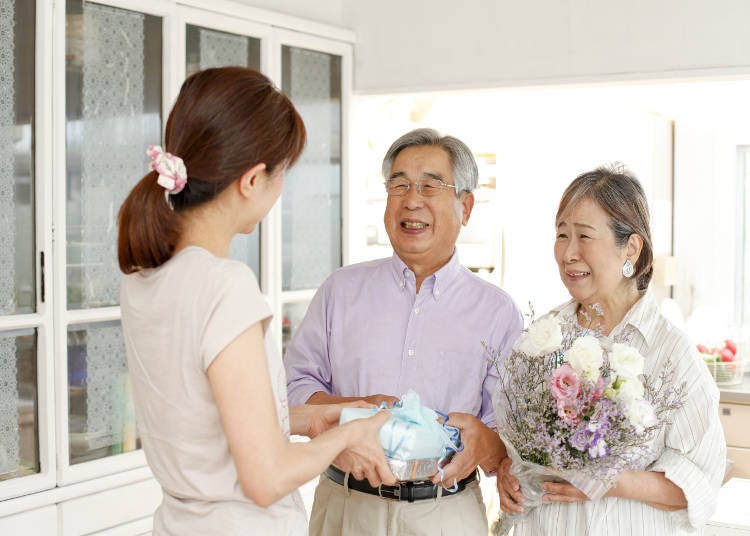
In most countries when visiting someone's home for the first time, it’s customary to bring a basket of fruit, a bottle of wine, or a dessert. Japan is no different. When arriving at a Japanese home, bringing along a small gift, called omiyage in Japanese, of snacks or fruit will be much appreciated.
It doesn't have to be expensive or big, but putting it in a nice bag and presenting it in a polite manner will show your hosts that you are familiar with Japanese culture and are thankful for their invitation.
While giving a gift, most Japanese people say "Tsumaranai mono desu ga..." which means, "It's nothing special but here is a little something for you." It's a humble way of offering thanks without making it a big deal or showing off that you brought a really nice gift for them.
4 – Announce Your Arrival

In many countries, when entering someone’s home we ring the doorbell, say hello, and thank the host for inviting us. Similarly in Japan, when entering someone's home we greet them and say “Ojama shimasu,” which means ‘sorry for intruding or disturbing you.’ This humble greeting shows your gratitude towards your invitation and that you appreciate the trouble the host went through to prepare for your visit.
5 – Take Off Your Shoes
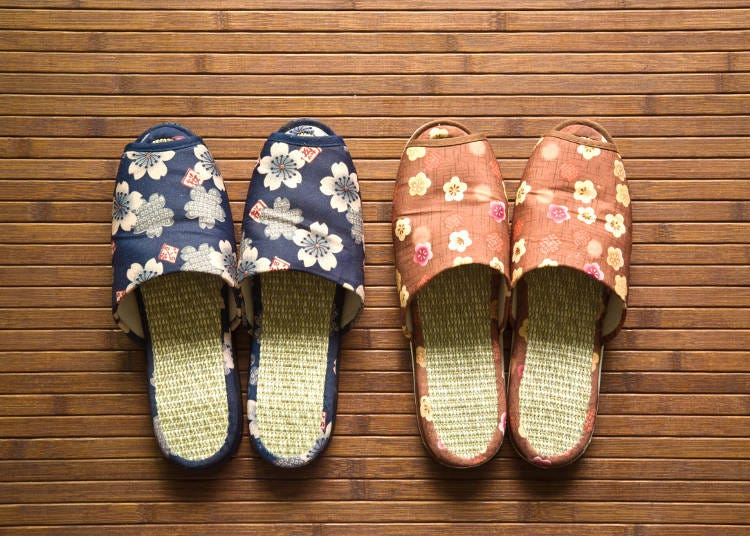
One of the most important and well-known thing about visiting homes in Japan is the ‘no shoes inside’ policy. But how exactly is it done?
The front entrance, called a genkan, is usually a lowered floor and the place where shoes should be removed. Sometimes people make the mistake of standing on the raised floor, taking off shoes and leaving them at the genkan, but shoes should never touch the raised floor.
Once you remove your shoes, the polite way thing to do is to arrange them along the edge of the genkan facing outward. This also makes it easier to put your shoes back on when you are leaving.
6 – Use Slippers
Many Japanese homes provide slippers when entering. Although not all homes have slippers, if they are available and everyone else is wearing them, it is a good idea to follow suit. You should always make sure to wear socks or stockings when visiting someone’s house, as it could be considered rude not to.
Most homes will also have separate slippers for the restroom. Just put on the bathroom slippers while using the toilet, and make sure to switch back into the home slippers once you have finished.
It should also be noted that you should take off slippers when entering a room with tatami mats. Upon leaving the home also remember to remove and put slippers back as nicely as they were when you first arrived.
7 – Where to Sit
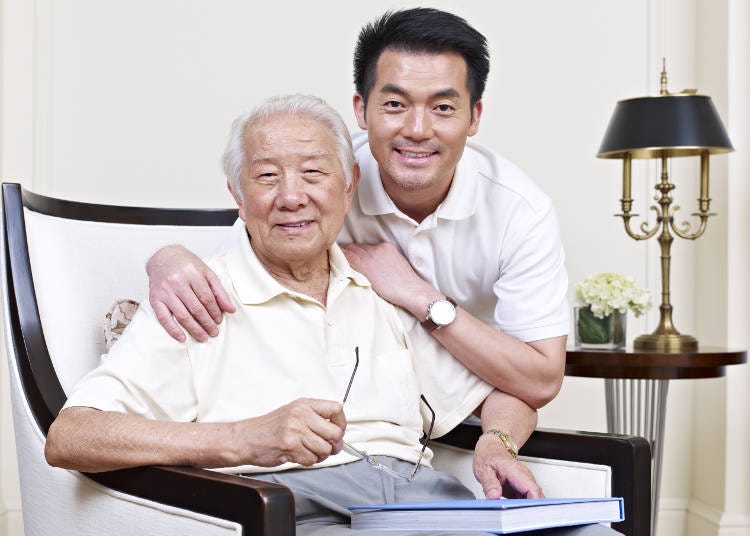
Once all the greetings and entrance rituals are done and you've been shown into the living room or the room where the host will be entertaining, it is best to stay standing until told where to sit.
Oftentimes a home has a family member with their own "special" seat. So to ensure you are not "stealing" anyone's spot, it might be a good idea to either ask where you should sit, or simply wait to be seated.
8 – Mealtime Manners
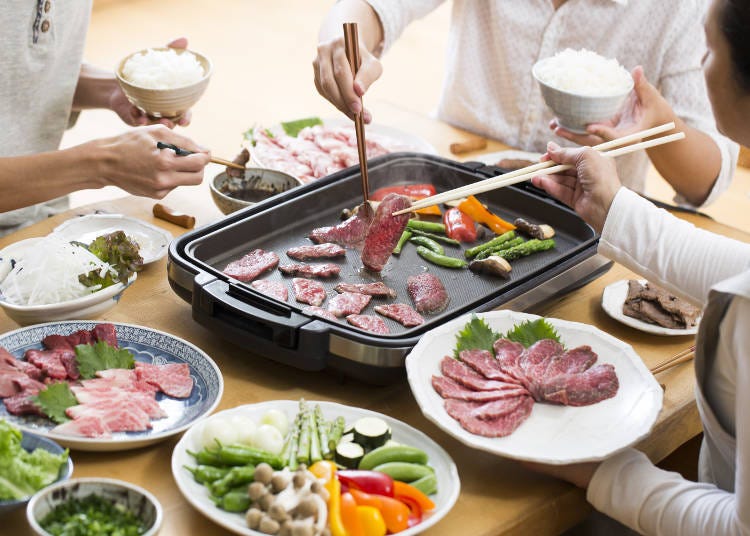
If you will be staying for a meal it is best to follow the habits of the other members of the home. Each family might have their own rules about cutlery, dishes, food habits, and so on, so try to observe what others are doing and follow accordingly.
Japanese people love to compliment the chef and constantly express how delicious it is by saying ‘oishii’ or ‘umai.’
Even if you are loving the food, if you are silent or don't compliment the food the Japanese person might not know if you like it. Try to express your gratitude and tell them how much you enjoy the meal.
Also, if you don't really like something, be polite about it and just tell them you are not a big fan of that type of food (e.g. natto) and they will understand. You don't need to pretend to like something, but don’t react negatively to a food item.
9 - Offer to Help Out After Eating

After dinner time, the host might start clearing the table and washing the dishes. At this time, you should make an offer to help. Though the host may insist that it is unnecessary, it is a polite gesture that will go a long way. Most likely the host will thank you for the offer and ask that you relax and make yourself at home. This is a good time to sit with other members and compliment the decor of the house, the food, and make other small talk to learn more about the people who have let you enter their private home.
10 – Don’t Overstay Your Welcome

After a delicious home cooked Japanese meal, stretching out and putting up your feet while checking your phone might sound great, but making yourself too comfortable in someone else's home might give off a rude impression. Try to avoid playing with your gadgets and instead interact with the people around you.
Taking a nap, lying down on the sofa, or putting your feet up might make others feel as if you have no respect for their property, and that you lack proper manners. Also, if you are offered alcohol, try not to overdrink. Laughing and talking loudly, getting drunk, and getting too excited could cause complaints from neighbors or be considered rude.
Even if other members might be acting this way it is important to remember you are in someone else's home and you should always try your best to show respect.
Come Again!
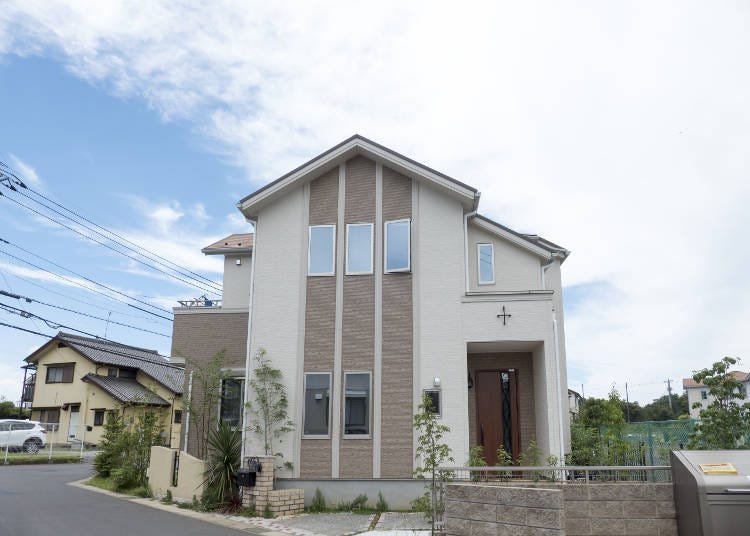
Visiting a Japanese home can be a fun and interesting experience because it gives you a glimpse of Japanese life and culture that you likely wouldn't get just by visiting tourist spots. Being invited to a Japanese home will most likely lead to a good friendship and an unforgettable experience. Remembering what to do and how to act will help ensure you get a second invitation.
*Prices and options mentioned are subject to change.
*Unless stated otherwise, all prices include tax.
Popular Tours & Activitiess
Recommended places for you
-

Kambei Sannomiyahonten
Yakiniku
Kobe, Sannomiya, Kitano
-

ISHIDAYA Hanare
Yakiniku
Kobe, Sannomiya, Kitano
-
Goods

Yoshida Gennojo-Roho Kyoto Buddhist Altars
Gift Shops
Nijo Castle, Kyoto Imperial Palace
-

Kanzenkoshitsuyakinikutabehodai Gyugyu Paradise Sannomiya
Yakiniku
Kobe, Sannomiya, Kitano
-
Appealing

Rukku and Uohei
Izakaya
Sapporo / Chitose
-

Jukuseiniku-to Namamottsuarera Nikubaru Italian Nikutaria Sannomiya
Izakaya
Kobe, Sannomiya, Kitano
-

Get Ready to Catch 'Em All! First Ever Permanent Outdoor Pokémon Park Opening Near Tokyo!
-

2025 Japan Autumn Color Report: Tokyo's Ginkgo Trees Starting to Glow
by: Timothy Sullivan
-

Enjoy Japan's Gorgeous Winter Lights! Ride the Romancecar to Shonan no Hoseki Illumination
by: Guest Contributor
-

New Seibu L00 Series Launching in 2026! What to See Along the Tokyo-Area Golden Route
by: Guest Contributor
-

A Travel Game Changer! Go Hands-Free Between Tokyo and Kyoto with LUGGAGE EXPRESS by JTB and JR Tokai
by: Guest Contributor
-

LaLaport TOKYO-BAY North Building Now Open: Shop, Dine & Enjoy Events at LaLa arena, Just 2 Stops from Disney
by: Wemmy Chau
-

Sumikawa Snow Park: Skiing in Northern Japan's Breathtaking Backcountry
-

All-you-can-eat 'Jingisukan' and Delicious Dining at Sapporo Beer Garden
-

8 Unfamiliar (But Totally Normal) Customs in Japan!
-

Visiting Sendai in Spring: What You Need to Know About Traveling to Sendai Between March and May
-
Ad

Japan is in the Midst of a Health Boom. Check out These Body Care Products People Are Using to Stay Healthy!
-

Hokkaido Winter Weather Guide (December–February) + Local Editor's Outfit Tips
by: Nemi Lin
- #best sushi japan
- #what to do in odaiba
- #what to bring to japan
- #new years in tokyo
- #best ramen japan
- #what to buy in ameyoko
- #japanese nail trends
- #things to do japan
- #onsen tattoo friendly tokyo
- #daiso
- #best coffee japan
- #best japanese soft drinks
- #best yakiniku japan
- #japanese fashion culture
- #japanese convenience store snacks












